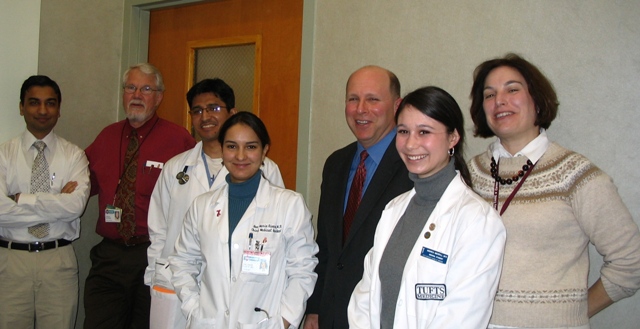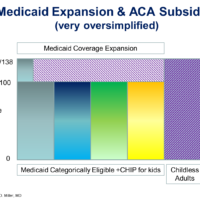Yesterday I had the opportunity to give Medical Grand Rounds at Caritas Carney Hospital in Boston on the topic of “Health Reform 2009 and Beyond.” Rather than compare and contrast various national health reform proposals, I reviewed the major forces and trends that are reforming healthcare, and explained how they would likely impact different stakeholder groups – particularly physicians.
I started by discussing the major trends in cost, access and quality – noting how the first two are easier to quantify and that the debate over access to healthcare services versus insurance coverage has been resolved in favor of health insurance coverage, because only having access to free clinics and emergency rooms doesn’t enable people to get the type of healthcare that they really need. The successor debate is what insurance needs to cover to be “adequate,” and what it means to be underinsured.
Transparency & Accountability
The heart of my talk was explaining the role of transparency and accountability in health reform at the national, state and private sector levels. (One of the earliest forms of transparency for clinicians was the National Practitioner Databank, which was created about 20 years ago to try and make it easier for the healthcare organization, insurers and government agencies to learn about adverse actions – such as malpractice suits and licensing board censures.)
“What are we getting for what we’re paying for?”
The most frequently discussed transparency initiative in healthcare is the big push for electronic health records. Information and transparency are being highly valued because as more detailed information about actual clinical and cost outcomes becomes available, it can be analyzed and used to make different parts of the healthcare system accountable for their contributions. (Note: the apparent dramatic lack of transparency and accountability that contributed to the collapse and impairment of so many financial institutions has fueled public calls for more accountability and transparency in many parts of society – including healthcare.)
Capitation was an early attempt to place accountability for the cost outcomes of individual patients onto healthcare organizations. However, because information connecting clinical decisions with overall costs was lacking, capitation was less than successful, and it often evolved into schemes to reduce the volume of care since that was the only measurement available related to total costs. Fortunately, accountability mechanisms have become more refined, and now include pay-for-performance, “episodes of care, and other forms of bundling of payments. (An example of an episode of care bundled payment would be a care group receiving a single payment amount for all the clinical services in a 30 day window for a patient receiving elective heart surgery.)
The common theme in this trend of transparency and accountability is that as costs continue to increase as a percentage of personal incomes, wages and GDP, insurance companies, private payers and employers, government agencies, and even patients are all asking, “what are we getting for what we’re paying?”
Power of the Pen
I also described for the physicians at Carney Hospital how as information systems become more sophisticated and can provide insights into the performance of smaller groups and individual physicians, more proposals and initiatives will seek to place greater accountability on the individual physicians because while physicians receive ~21% of all healthcare spending in this country, their actions influence how about 70-80% of each healthcare dollar is spent.
This concept is being translated into practice for Massachusetts state government employees, whose health benefits program has collecting and analyzing information about all the primary care physicians in the state, (and selected types of specialists), and then put them into three “quality tiers”: Excellent, Good, and Standard. Accountability is added to this transparency because patients seeing physicians in the “higher quality” tiers pay lower insurance co-payments.
There is significant controversy around this profiling and tiering program – particularly about what data is used and how it is analyzed. Certainly transparency and accountability are only valuable for creating positive changes when the data is valid and reliable – something I discussed with the physicians at Carney Hospital and have written about previously. The key challenge in making this type of data valid and reliable is how adequately it is risk-adjusted in the analysis so that clinicians and providers are “graded” based upon their actual skill and work, rather than on the type of patients they see.
Medical Homes as Positive Solutions for Physicians
Another example of how the “power of the pen” concept is leading to new models for accountability in healthcare is the Medical Home. I told the medical students, residents and attending physicians at Carney Hospital that Medical Homes might be a positive opportunity for physicians to improve the quality of care while accepting and managing more financial risk and responsibility. Since the details of Medical Homes can be very complex, my one slide description was: “Medical Homes are arrangements where a physician (or group) is responsible for coordinating individual patient’s care across all sectors of the healthcare delivery system and ensuring that the patient receives appropriate preventive care and self-management assistance.” Since financial compensation is often a concern for primary care physicians, I noted that payment for Medical Home services is in addition to reimbursement for traditional care services provided to patients, and it could be a flat (risk adjusted) payment per month per patient, while also including incentive payments for actually improving patients’ clinical outcomes and/or reducing the amount of healthcare spending they generated.
Challenges and Opportunities for Physicians
I concluded by noting that these changes present challenges and opportunities for physicians. The first challenge is that if physicians don’t participate and lead in discussions about national policy issues and local delivery system reforms, then changes will be made to them rather than with them. That is, they have the choice to “Lead or be Led.”
Such leadership also needs to be paired with collaboration – both within clinician communities and with other stakeholders such as administrators, employers, payers, government agencies and patients. (These are two of the “lessons learned” from Geisinger’s experience described by Paulus et. al., in their Health Affairs article last year.) During the Grand Rounds’ Q&A it was also noted that geography and location are important factors influencing the ability of physicians and hospitals to exert leadership and promote collaboration within communities. For example, Geisinger is the major healthcare delivery entity within a relatively contained geographic community. However, this observation illustrates the importance of multi-stakeholder collaboration, because without it, everyone is working in isolation, efforts are not coordinated, time and energy are wasted, and the outcomes provide little or no benefits to anyone.
Reviews & Outcomes
While the audience was attentive and only a few people left to answer pages, it is always hard to know how much a group benefits from this type of presentation. So I was very gratifying to receive this email review from one of the organizing physicians at the hospital:
“Thank you for the fabulous grand rounds at Caritas Carney Hospital yesterday. You obviously put a great deal of time and thought into presenting to us; your lecture was a remarkable overview of so many issues affecting our health care system today! You have a great mind to be able to have both the comprehension to understand these concepts, and the ability to synthesize numerous trends and ideas into an integrated presentation. Two of the best compliments to you are 1) docs stayed until the end of grand rounds and 2) our new insights inspired conversations and debates in hospital halls and offices all day long!” Mary Lou Ashur, M.D.
The last comment is precisely the outcome I was hoping to achieve, since just educating people about different proposals may not help build their understanding of the problems and possible solutions, not give them guidance for how they can get involved, etc. And from the picture below taken after Grand Rounds, I think everyone was happy with the result – even if I do have a funny smile.


